How It's Made
Say Hello to Philip Goolkasian, Senior Product Designer

What do you do?
I design — which I see as the art and science of creating frameworks. At Instacart, I’m working with an incredible team to build design systems, and use them to craft products and environments that support the people who shop and deliver groceries with our app.
How did you get into design?
I’ve always had a creative drive, but most of it can be traced back to my work on the Boy Scouts of America’s centennial logo. The Boy Scouts were excited to try a contemporary design approach, and over the next four years, we saw that brand identity applied to everything — from the end of a pencil eraser to the NASDAQ jumbotron in Times Square. Since then, I’ve been focusing on design across multiple disciplines — including branding, architecture, industrial, and product design.
What makes everything worth it?
Occasionally a project comes along that is truly unique. Maybe it’s solving a problem that’s never been solved before or turning a convention on its head with a new approach. This is where design really shines and contributes to innovation. I’ve had the chance to work on some truly groundbreaking projects and to make a meaningful impact through creativity and design.
What’s the greatest piece of career advice you’ve ever received?
I was lucky to have interned at Leo A Daly under their creative director, Walt Geiger. His advice to me was that everything should be a work of art — even sketches, doodles, and early work. As evidence, he’d flip through the pages of Thom Mayne’s dossier “Tangents and Outtakes” — a portfolio filled with rough models and drawings that are clearly exploratory, yet beautifully crafted. Any page could be ripped out and hung in a gallery. This piece of advice is the reason why craft is such an integral part of my work.
What advice would you give to a designer just starting out?
The advice I’d give to designers is:
1) Care. Design is really a service profession. We serve the people that use the things we create. And these people come from all walks of life all around the world. The moment you design for other designers, your work begins to lose perspective and meaning.
2) Know thyself. Take the time to hone your craft and become an expert in your work. Only then can you walk into a room and inspire confidence to do extraordinary things.
Where do you find inspiration?
Lately, I’ve been finding inspiration in business non-fiction books. Walter Isaacson’s Steve Jobs, obviously, as well as The Everything Store, Shoe Dog, and Grinding It Out.
And I’m currently reading Alibaba: The House that Jack Ma Built.
Working on various projects at Instacart, which one was the most challenging and exciting for you?
At Instacart, I’m excited to be leading the team behind Instacart’s fulfillment design system (colloquially called “Trail Mix”). It’s especially challenging building a design system from the ground up for a product embedded with 5 years of bespoke design decisions. Our team is taking a pretty radical approach by crafting the design framework alongside our existing product, and continuously iterating and researching to ensure its effectiveness and scalability.
What I’m most proud of is how the team collaborates with other disciplines. Since introducing Trail Mix, there’s been a groundswell of support from Design, Engineering, Project Management, and others to cross-pollinate ideas and apply the design system to new projects, which is amazing.
Where did you grow up and what made it special?
I grew up in the Central Valley, which is a major center of agriculture. Growing up in “the breadbasket of the world,” climate is a constant topic of conversation, as it plays such an important role in crop production. Surrounded by this influence, I’m particularly appreciative of the way food is harvested and processed. Wine in particular, which can vary dramatically due to temperature, alkalinity, and sun intensity. When I pick a bottle of wine from the store — something shoppers do hundreds of thousands of times per day — I’m reminded of the year it was bottled, the heat of that particular summer, and the memories associated with that particular region. It’s a very personal experience.
What was the first thing you ever designed?
The earliest design I can remember is a wall clock I built with my father. I drew up the elevations and sections, and he helped me with the assembly drawings. We built the clock in Black Walnut, and it’s still hanging above the mantle!
What is something you’re most proud of in your life or career?
Back when I was working in the medical industry, I once received a review on one of my products that it actually saved a person’s life. It’s these moments that get me excited.
What is something non-design related that you’ve brought into your design work?
In both digital and physical design, I lean heavily on my background in engineering, business, and cross-disciplinary collaboration to challenge me to think differently. The analytical mentality collides with my creative impulses to achieve a semblance of balance. It’s incredible to bring this experience into my day-to-day work, and it helps overcome some really challenging design projects.

Come build with Philip.
If you’re excited about defining the future of a one trillion dollar industry, building an ad-serving network for groceries, scaling the world’s most extensive grocery catalog, perfecting a real-time on-demand logistics chain, all while simultaneously designing the future of food for millions of people, you should take a look at the available opportunities or reach out to someone from the team.

Most Recent in How It's Made
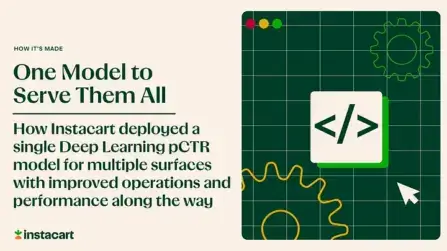
How It's Made
One Model to Serve Them All: How Instacart deployed a single Deep Learning pCTR model for multiple surfaces with improved operations and performance along the way
Authors: Cheng Jia, Peng Qi, Joseph Haraldson, Adway Dhillon, Qiao Jiang, Sharath Rao Introduction Instacart Ads and Ranking Models At Instacart Ads, our focus lies in delivering the utmost relevance in advertisements to our customers, facilitating novel product discovery and enhancing…...
Dec 19, 2023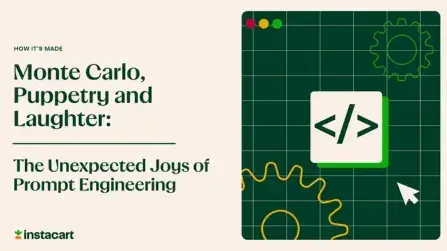
How It's Made
Monte Carlo, Puppetry and Laughter: The Unexpected Joys of Prompt Engineering
Author: Ben Bader The universe of the current Large Language Models (LLMs) engineering is electrifying, to say the least. The industry has been on fire with change since the launch of ChatGPT in November of…...
Dec 19, 2023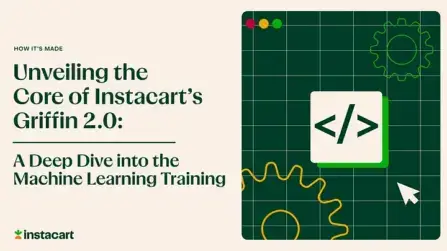
How It's Made
Unveiling the Core of Instacart’s Griffin 2.0: A Deep Dive into the Machine Learning Training Platform
Authors: Han Li, Sahil Khanna, Jocelyn De La Rosa, Moping Dou, Sharad Gupta, Chenyang Yu and Rajpal Paryani Background About a year ago, we introduced the first version of Griffin, Instacart’s first ML Platform, detailing its development and support for end-to-end ML in…...
Nov 22, 2023

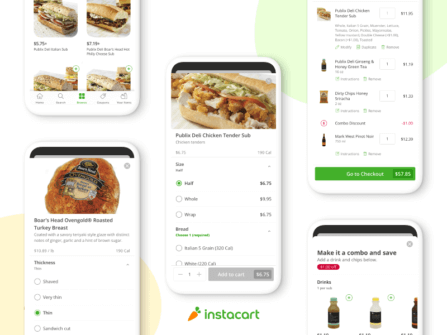 Building Instacart Meals
Building Instacart Meals  Introducing Coil: Kotlin-first Image Loading on Android
Introducing Coil: Kotlin-first Image Loading on Android 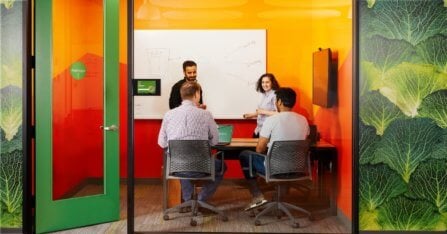 7 steps to get started with large-scale labeling
7 steps to get started with large-scale labeling 
